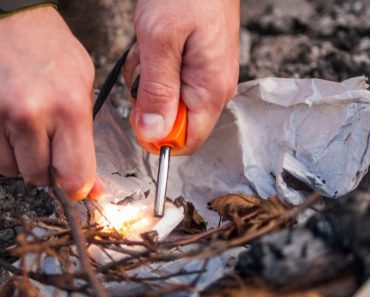Worms are the unknown heroes of traditional agriculture, and they have made the soil of many gardens fertile with their hard work. These small crawlers will do the same for your soil if you give them a chance and if you learn how to help them flourish in your garden.
Having worms in your garden soil is like having hundreds of thousands of miniature tillers running all day and night, with the added bonus of spreading compost in the soil. Earthworms eat the soil, and as they go through it, they not only help mix the soil but also help loosen compact silt or clay, so that water can seep through.
Their “earth-moving” action also helps aerate the soil by about 70 percent, and this allows tiny organisms to grow and thrive around the roots of the plants.
Earthworms will recycle nutrients in the soil and disperse them through their castings which makes the nutrients more available to the plants in your garden. The earthworm castings are known as black gold because they are as valuable as gold to a plant and to the experienced gardener.
When worms eat their way through the soil, they will break down organic material and soil in their crop and stomach. The organic material is broken down into plant nutrients, and the soil is ground into fine particles, improving the overall quality of the soil. The excreted, improved nutrients are a mix of beneficial microorganisms from inside the worm’s stomach and nutrients from the soil.
People from the USDA have done various tests to figure out how earthworms improve the garden soil, and they discovered that the earthworm castings have a better nutrient content than the soil from which they were made. In fact, the nitrogen level is five times higher, the phosphorus level is seven times higher, the magnesium level is three times higher, the calcium level is one and a half times higher, and the potassium is eleven times higher than in average soil.
The USDA also calculated that the worms usually found in an acre of land can produce up to 700 pounds of earthworm castings a day. This means you get 700 pounds of free fertilizer per day thanks to earthworms, without counting the aeration and the improvement of soil drainage work these small creatures are doing.
Know your worms
To learn more about worms, you should first be able to make the distinction between the common earthworm (Lumbricus terrestris), which is known by many names, although “nightcrawlers” is the most used one in North America.
Nightcrawlers dig deep burrows and feed on the surface, as opposed to other worms that eat by burrowing under the earth. They are also more visible than other earthworms because they feed and mate on the soil surface.
Angle worms (Aporrectodea caliginosa and Aporrectodea rosea) are common in gardens and fields, and they are known for mixing the upper part of the soil. These are ideal for your garden if you want to maintain a thick layer of black soil.
The octagon-tail worm (Dendrobaena octaedra) is a small earthworm that lives mostly on the leaves on top of soil, feeding with bacteria and fungi. These are common in forested areas.
Leaf worms (Lumbricus rubellus) are also living in the top leaf layer and the upper side of soil and can be a good addition to your garden soil, although they are not as efficient as nightcrawlers and angle worms.
The red wrigglers or tiger worms (Eisenia fetida) are easily recognizable due to the stripes on their bodies, live on the surface of soil, and will usually thrive in compost. These are great worms for vermicomposting.
Earn Your Food Independence NOW
Healthy worms, healthy soil
If you have healthy worms in your garden soil, the soil biomass will also be healthy, and it will help keep your plants strong and vigorous. Here’s what you need to do to encourage worm activity in your garden.
Earthworms will eat any organic material available, such as compost, decaying plants, and rotted manure. When the population of earthworms in your soil increases, you will have to provide them with organic material so that they can keep on feeding. In general, cow manure, green clover leaves, grass clippings, and any material with a high-nitrogen content make great worm food.
You can also provide kitchen waste as worm food since these garden workers will happily eat fruit and vegetable peels, food leftovers, and even fish bones. I once read a USDA report that suggested adding organic waste directly into the ground and skipping the compost pile.
They say that worms are creatures of habit, and if you provide food once, they will keep returning to that spot as long as you keep feeding them. You can till the organic waste directly into the soil, or you can leave it on top of it. Either way, the worms will dig their way through it during their feeding frenzy.
When mulching, you should avoid acidic mulches because you can kill the worms. For example, if you use large quantities of pine needles for your mulches, you can change the pH of the soil, making it more acidic. And acidic soil with a pH of 5.4 or less will kill the worms.
If acidic soil is naturally occurring in your garden, you can add lime to increase the pH and encourage the worms to visit your garden. If you do so, keep in mind that you need to test the soil pH each year to make sure it’s neutral. However, this can become a problem if you plan to grow acid-loving plants like blueberries.
If you are working with sandy soil, the population of earthworms is usually lower compared to silt or clay soils. To encourage the worms population, you should add more organic material (especially kitchen waste) to attract more worms and build up the soil.
Temperatures can often kill worms, and this usually occurs during extremely hot summer days or during autumn freezes which occur suddenly, out of season, sort of speaking. You can protect the worms in your garden from these temperature extremes by adding a thick layer of organic mulch. During the scorching days of summer, I add a layer of newspapers, and then I cover it with grass clippings or leaves. This not only keeps the weeds down and the soil cool but also helps retain moisture and provides nutrients to the soil once the organic matter begins to rot.
If you want to protect the earthworms in your garden, it’s also recommended to till less or avoid tilling at all. Tilling will break down worm burrows, killing the worms. If you do want to till, you should keep some areas in your garden that won’t be tilled, and you should opt for fall tilling. If you plan your tilling during autumn, you will aerate the soil and provide a layer of insulation for the worms during the winter months.
After tilling, it’s also recommended to heavily mulch the soil with chopped leaves or any other organic material since there are a lot of young worms in the fall, and they will need plenty of food. With enough food, the worms will remain active during the winter, and they will provide enough castings for your spring soil.
Working with subdivision soil
Some gardeners have soil that was completely exhausted, the subdivision soil made from mixed clay leftover from constructions, fragipan, desert asphalt, and more. Even with such dead soil, worms can do a pretty good job and bring it back to life. This will take between three to five years, and it may be a tedious operation.
You can revive your soil using two methods. The first one involves building raised beds on a thick layer of newspapers on the dead soil and adding worms, compost, and other organic material, and letting the worms do their job.
The second involves a technique called worm seeding, which involves cutting blocks of soil from rich pastures with healthy worm populations and “transplanting” these blocks into your garden in various zones. You will need to add organic material into the dead soil near the transplanted blocks and keep feeding the worms. Some gardeners will often buy worms from bait shops rather than go worm hunting on pastures and if you want to do the same, pick nightcrawlers instead of red wigglers since these will thrive only in compost.
Worms are not always welcomed
To my surprise, I discovered a while back that not all soils and places are worm-friendly or welcoming to worms and in some parts of the country earthworms are considered an invasive species.
For example, in Minnesota and around the Great Lakes, non-native worms can cause problems, and the forests there grew without the need for worms. The forest floors are covered with vegetative matter called duff, or forest duff, and bacteria and fungi are responsible for duff decomposition.
However, when worms were introduced in those regions, they started to break down the duff in the northern forests and created a competition for fungi and bacteria. The worms not only break down organic matter, but they also feed on the fungi that used to decompose the forest duff.
The decomposition process is speeding up due to worm activity, and some native plants and small animals are affected by the rapid forest duff removal. Some plants cannot survive without the duff and die off in duff-less soil.
So, keep this in mind if you are a northern gardener and avoid introducing worms into your garden and look for other alternatives of soil-building for your region.





![[VIDEO] Pocket Survival Kit (PSK) – Fire Tools [VIDEO] Pocket Survival Kit (PSK) – Fire Tools](https://survivalcove.com/wp-content/uploads/2023/08/CachePSK2-370x297.jpg)





















